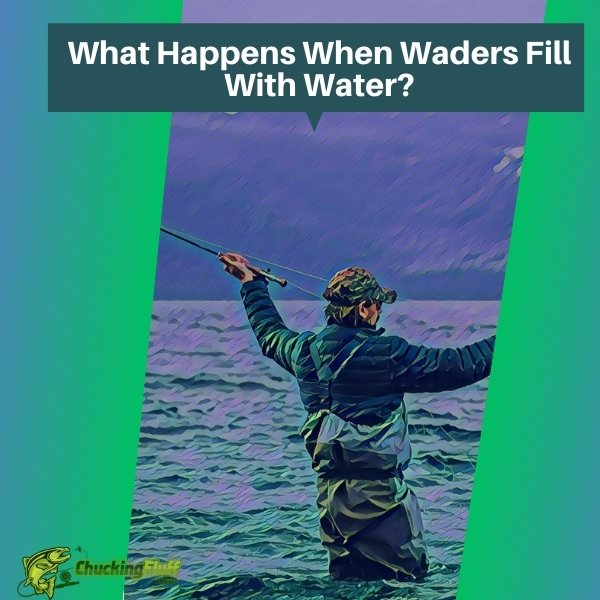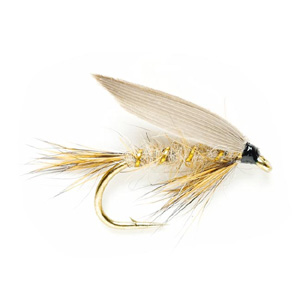| Disclosure: Just to be open and honest the buttons and links you click on in the website will in most cases take you to another website where you can purchase the products I am reviewing. As an Amazon Associate I earn from qualifying purchases. |
What Happens When Waders Fill with Water? Avoid Drowning

The scariest thing of all time for any angler is drowning.
You could be standing on the shores fishing in the jetties or are up on slippery rocks testing if a fish likes your fly.
Before you know it, you have lost balance, slipped and dunked into the water.
If you don’t have a snugly fitting wading belt, your waders will fill up quickly.
So, what happens when waders fill with water?
There is a risk of drowning depending on the type of waders you are wearing.
Old-fashioned rubber waders are the biggest culprit for such because their weight is massive and you can’t imagine the extra pounds if they are filled with water.
Contrary to popular opinion, neoprene and breathable waders will hardly pull you down.
These have a neutral buoyancy in case they are filled with water.
Manufacturers design them with a material that tends to float and neoprenes boast this characteristic more than their breathable partners.
Quick Post Navigation
- What Happens When Waders Fill with Water?
- Extreme Weight Pulling You Down in Some Wader Types
- Neoprene Waders and Why They Help Keep You Afloat When Filled with Water
- Water Density and Other Factors That Help with Buoyancy When Waders Fill with Water
- What Happens When Waders Fill with Water? – FAQs
- Conclusion
What Happens When Waders Fill with Water?
The post isn’t here to add to your phobias or keep you off your fishing hobby.
We prefer being safe and informed.
Know what to do in case your waders fill up with water and how to prevent this from happening.
Let’s break the occurrences and learn how to get to safety in case you fall victim.
Extreme Weight Pulling You Down in Some Wader Types
Waders on their own should be lightweight weighing anything between 3 and 6 pounds with a few slightly heavier.
Falling in the river or lake means water will enter your waders and flow to all possible parts unless you have a tight wading belt that can regulate the water movement to your waist and feet.
- One size fits most, fits fully adjustable to 55" waist sizes
- 2" (50mm) nylon webbing, more comfortable wearing and encircling protection
- Nylon web belt with snap buckle and ladder loop to take up slack
- Two belt clips on each side make the adjustment more convenient and smooth
- Not just for fishing but also great for carrying tactical gear
Otherwise, water fills up the waders increasing their weight.
You will notice dense puffing from the space occupied by water.
Anyone who has tried swimming in this state can attest to the awkwardness.
The weight of the water, especially in rubber waders weighs you down making it hard to get on your feet or swim to the boat.
And even if you make it through, it might be tougher to get over the steep bank.
Chest waders are known for being more cumbersome in such situations unlike hip waders; however, both will hinder your efforts in trying to exit the river safely.
Flooded waders would really love to float and help you with buoyancy but they are unable because of the water inside them.
Neoprenes and breathable waders can hold you up and that is where your floating skills need to come into play.
Neoprene Waders and Why They Help Keep You Afloat When Filled with Water
First, in case you are going to wader, you are safer in neoprene waders than old-school rubber waders.
Why so?
Neoprene fishing waders are made using nitrogen and a special rubber.
Their inner side contains tiny nitrogen bubbles to boost insulation and the material combination makes the waders ideal for frigid temperatures.
Besides being waterproof, they are moisture-wicking and can keep you dry as long as they aren’t punctured.
Neoprene waders maintain their design and structural integrity in case you fall in water.
Because of their moisture-wicking properties, they aren’t meant to allow the entry of water into their inner linings unless damaged.
Water Density and Other Factors That Help with Buoyancy When Waders Fill with Water
The density of water in waders is the same as that outside.
Flooded waders are mostly neutral if considering the swimmer’s buoyancy.
Sometimes, you might fall and the waders trap more air in their bottom parts to make your legs extremely buoyant.
If this happens you can find it tough to keep your head above water but you can prevent this by wearing a rated PFD over your waders or fishing jacket.
Let’s be clear: Waders though can keep you afloat, they aren’t PFDs.
You need a PFD even if you are in waders and these exist in different types, styles and designs.
Safety is the most crucial aspect when it comes to waders filling up.
An angler with flooded waders and a PFD or life jacket on is more confident to float to safety than one without.
PFDs depending on the type boast enough buoyancy that can hold you up for longer emergencies in any type of water until you get rescued.
Some are bulky but this isn’t an issue if life is at risk – it will keep your unconscious self face-up and floating.
What Happens When Waders Fill with Water? – FAQs
Waders filling with water is a normal occurrence among waders and so many questions arise when the topic is being discussed.
See some below that should help you maintain safety when wading.
Q) What Can Make Waders Get Filled with Water?
A) Water can fill up your waders from boat splashes that can get into them through the open chest and back areas in case the hem doesn’t fit snugly.
Besides, it could be from dunks or wading in water above chest level.
Another common reason is punctures, gaping seams and holes in the gear.
Q) What Should I Do if I Fall in Waders?
A) Don’t panic. Instead, gather yourself together and try identifying the type of ground you are stepping on to know if it is safe to move forward.
Regardless of the situation, avoid moving against the direction of the current.
Slowly move with the water to the bank or boat.
Q) Do Waterproof Waders Still Fill Up with Water?
A) Waterproof waders with moisture wicking properties will keep off water from entering their inner layers.
They might fill up if punctured or through gaped seams.
Conclusion
What Happens When Waders Fill with Water?
Floatation won’t be affected that much if you are wearing neoprene or breathable waders and they’re flooded.
Rubber waders are the worst in this scenario since their weight with water inside will weigh you down and almost hinder leg movement.~
You want to avoid them at all costs if you will be wading or boat fishing.
Ensure you are wearing a PFD for these times or when casting from steep cliffs and slippery rocks.
Slippery surfaces can be the reason for falls in the water causing your waders to flood.
Last update on 2025-06-18 / Affiliate links / Images from Amazon Product Advertising API
This product presentation was made with AAWP plugin.



